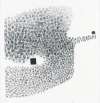Magic
Eye
Victor Pasmore's Magic Eye series is a collection of seven etchings and aquatints titled from Magic Eye 1 through to Magic Eye 7. Created in 1995, this series showcases Pasmore's sophisticated use of geometric abstraction and his exploration of visual perception through the interplay of form and colour.
Victor Pasmore Magic Eye For sale
Magic Eye Market value
Auction Results
| Artwork | Auction Date | Auction House | Return to Seller | Hammer Price | Buyer Paid |
|---|
Sell Your Art
with Us
with Us
Join Our Network of Collectors. Buy, Sell and Track Demand
Meaning & Analysis
The Magic Eye series represents a deep exploration of optical effects and abstract forms, reflecting Pasmore's engagement with the principles of visual psychology.
Pasmore employs etching and aquatint to achieve a range of textures and depths, manipulating light and shadow to create illusions of three-dimensional space on a two-dimensional plane. The technique allows for subtle gradations of tone and colour, which are crucial for forming the series’ optical effects.
Each print in Magic Eye features fuzzy pools of colour that are punctuated by dark sharp lines and pronounced ovals. These contrasting forms create visual depth and appear to shift and move as the viewer's perspective changes. This dynamic interaction between the artwork and the viewer is central to the series' impact, as it transforms static images into seemingly animate objects. Pasmore's use of overlapping forms and contrasting colours enhances this effect, making each print a study in visual perception.
The Magic Eye series continues themes from Pasmore's earlier works, particularly his interest in art that blurs the line between abstraction and perceptual realism. These prints serve as aesthetic objects and as exploratory tools within the broader context of Pasmore's interest in the foundations of visual perception.





